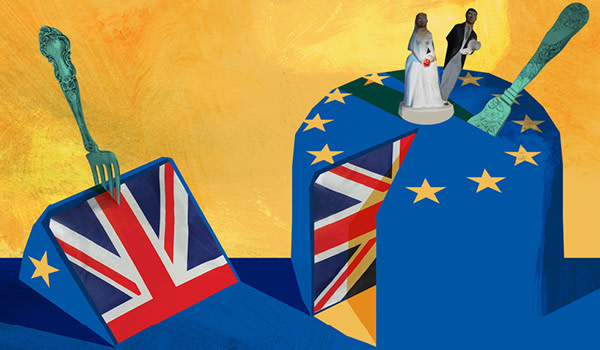New polling methodology puts Remain on 53%

Roula Khalaf, Editor of the FT, selects her favourite stories in this weekly newsletter.
Both sides of Britain’s EU referendum campaign are scrambling grass roots volunteers to encourage people to go and vote, with polling suggesting the outcome will be very close.
Pollsters have warned that turnout will be crucial in determining the result on June 23.
Research by leading pollster John Curtice for the National Centre for Social Research suggested that the result was too close to call.
The voting intentions study using new polling methodology recommended by an inquiry into what went wrong with last year’s general election polls has found that 53 per cent of people will be voting to remain in the EU, while 47 per cent support leaving.
Mr Curtice said the outcome “looks so close that any lead should be treated with caution”.
On Monday night, an ORB poll for the Daily Telegraph gave Remain a 53/46 point lead, but a YouGov, but a YouGov Times poll gave Leave a 51/49 advantage.
Opinion polls shifted in favour of the Leave side last week but in recent days Remain appears to have regained some ground.
On polling day, Conservative Remain campaigners will focus their attention on 90 areas, mostly in south-east England’s commuter belt around London.
Campaigners in neighbouring areas are being encouraged to work in these seats on polling day, while those in other areas have been told to sign up with the Stronger In campaign and follow its orders, which could include lobbying voters from other political parties.
Labour has given Stronger In access to its voter mobilisation database and recruited nearly 70 field staff, meaning the Labour party’s ground networks will become a vital part of the bid to get voters to the polls.
Stronger In has poured resources into social media — to reach wavering voters but also to build its network of supporters.
It is using sophisticated campaigning tools developed by Jim Messina, the US data expert who ran Barack Obama’s successful 2012 re-election campaign. Mr Messina’s fusion of technology and politics uses detailed information on individual voters — from shopping patterns to newspaper readership — to calculate how strongly they support Remain, and how likely they are to vote.
Campaigners can then target messages to win over waverers or convince apathetic voters to turn out.
One of the Remain camp social media team’s main tasks had been to accumulate email addresses, one Tory aide said. “Once we’ve got that, we know they are interested, they can be motivated to go out and campaign for us, we can build a relationship with them,” he said.
Stronger In has 85 staff at headquarters organising local volunteers to hand out leaflets and knock on doors. A large amount of this work is done by volunteers.
They will target commuter railway stations in the morning and evening rush hours and have street stalls along main roads.
Ben Page, chief executive of pollster Ipsos Mori, said that turnout was on track to be about the same as last year’s general election, in which 66 per cent of voters participated.
————————-
UK’s EU Referendum: How people would vote

For a more detailed summary of opinion polling visit the FT’s Brexit poll tracker page
————————-
A higher turnout would benefit the Remain campaign, he said: “Leave supporters are diehard voters, they will turn out come what may, but Remainers are younger and more flexible in their likelihood to vote.”
Pollsters are finding it harder to reach Remain supporters than those backing Leave, research by BMG published over the weekend suggested.
Michael Turner, BMG research director, said this could mean that opinion polls are understating the level of support for Remain.
Whether Britain remains part of the EU could come down to the weather on the day, Mr Page said: “The result does look very close indeed. Rain is ideal for Brexit; Remain needs lots of sunny weather and for polls to continue to show a very close competition because one of the things that drives wavering voters to the polls is believing the outcome is very close.”
The Met Office is currently forecasting a mixture of sunshine and showers for polling day.
————————-
Brexit? In or Out

What a British divorce from the EU would look like
How any break-up is carried out will have a huge impact on Britain for generations
The economic consequences of Brexit
Three very different outcomes of a British vote to leave the EU
What would Brexit mean for the City of London?
There is a clear split over how a vote to leave would shape the capital’s future as a financial centre
What the City stands to lose and gain from Brexit
Sectors such as foreign exchange trading have boomed during EU years
What has the EU done for the UK?
The long-running debate over the economic benefits of membership remains unresolved
————————-
Comments